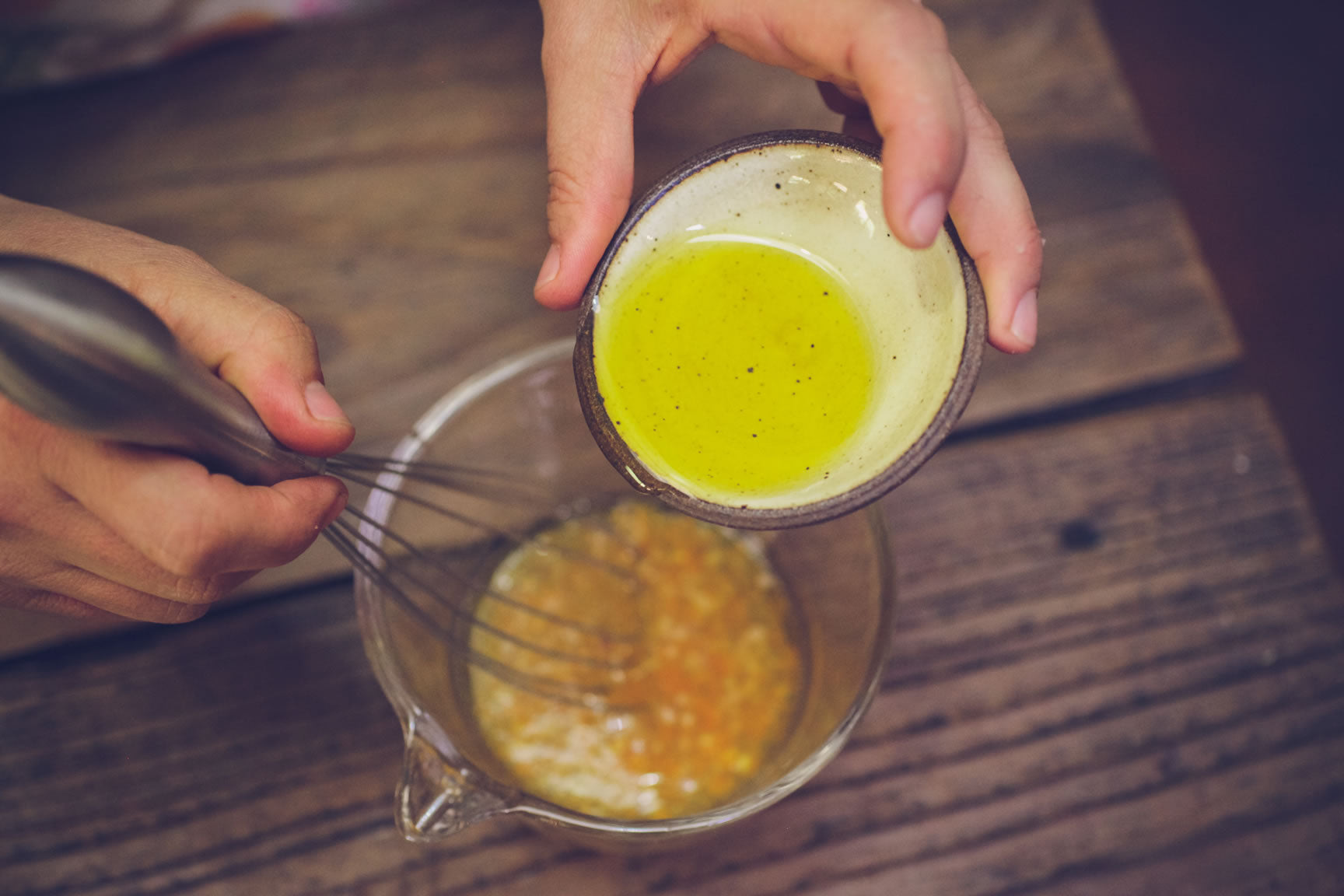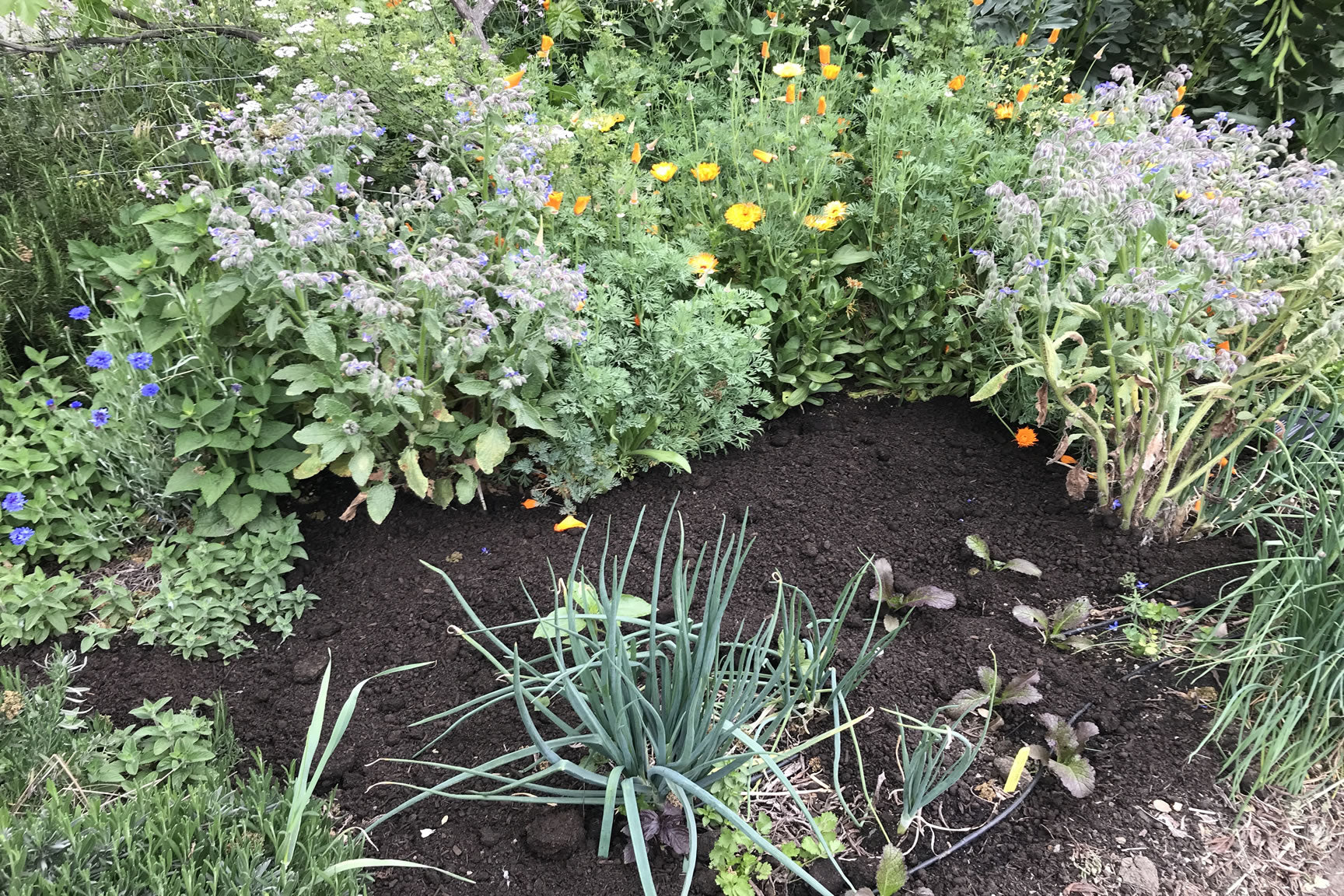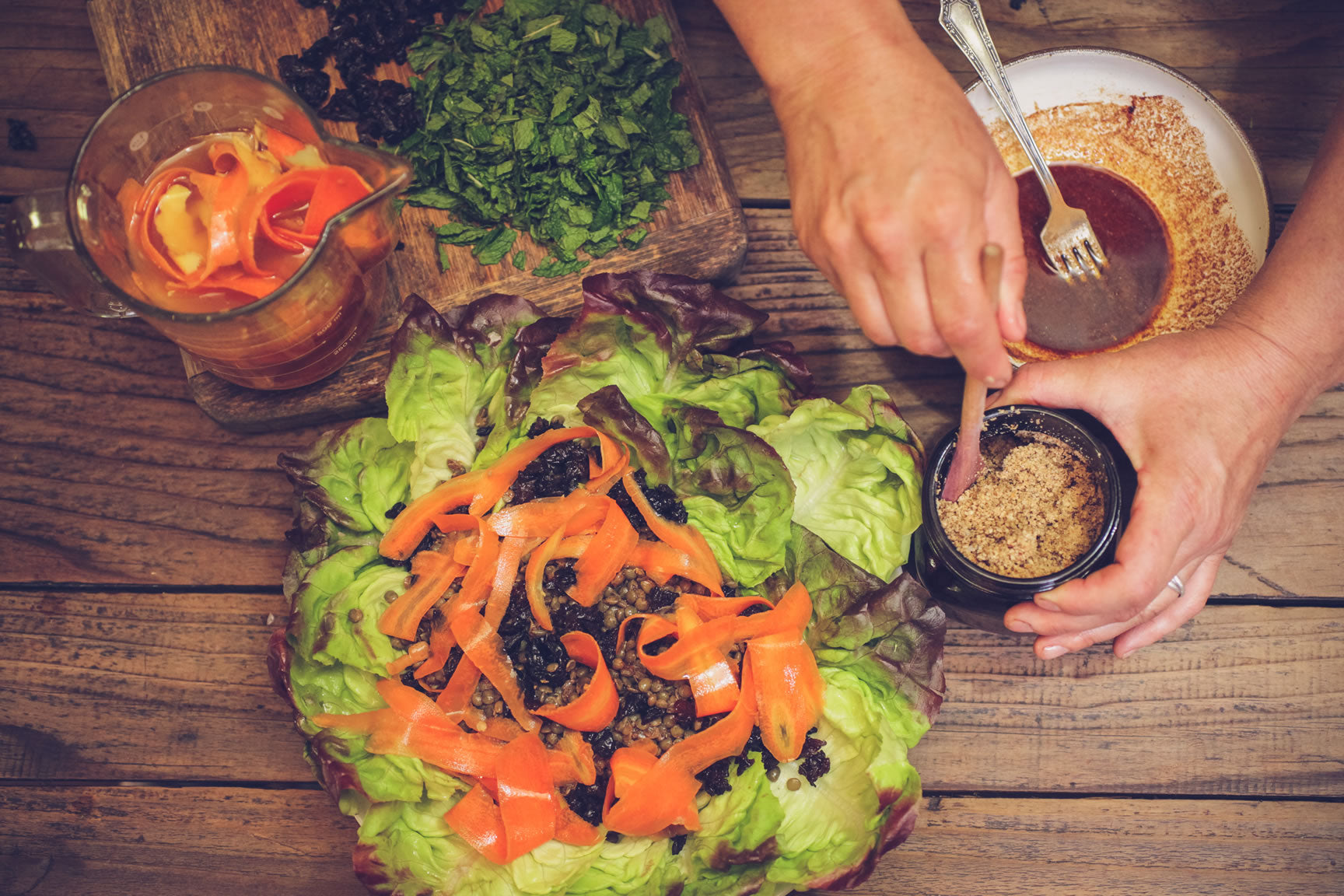- Continue Shopping
- Your Cart is Empty
May 2018 Journal: Peak Salad

IN THIS MONTH'S JOURNAL...
- Fava Greens Salad with Citrus Vinaigrette
- Shaved Asparagus Salad
- Lentil Salad with Ginger Pickled Carrots and Dukkah
- Building a Salad Dressing
- Garden Notes
- Workshops & Events
Introduction
After the late rains, as the season warms, we shuck off layers of winter sluggishness, like too much clothing on a warm afternoon. We want to run through the grass and smell the wildflowers and dig in the garden beds, we want to drink clean water and eat green, fresh things. The sap is coursing through the forest and rising up into new growth, and it’s hard not to feel the call, too, to simultaneously branch out and to prune back, to open up new space in the garden, the home, or the heart. Buds swelling to fruit, birdsong and swift streams, young crickets in the evening, time that speeds up and stretches and brims with possibility. Spring is full of this forward momentum, and all the kingdoms are awash in it.
Salads are the food of choice for many right now, and not just because of the way our culture markets swimsuit season as an exercise in body-shaming. Salads, because they are light and right and fresh. Because the produce is at its cool green crunchy peak. Salads, because the body knows what it wants. This issue is all about salad.
Fava greens are oft overshadowed by the huge pods they bear; we love us some fava bean, to be sure, but the greens have their own appeal, too, distinct but similar in flavor to the beans. The young greens are silvery and tender, earthy and fresh, and the flowers are edible, too, with an added sweetness that comes from nectar. We borrowed this recipe from our friends at Edible Monterey Bay; make it soon, because fresh fava won’t be here long.
Fava Greens Salad
Asparagus has plenty to teach us. Those who grow it must learn what it teaches about restraint; it cannot be harvested for the first three years after planting, or it will not have enough energy to come back after a long winter dormancy. The spears that we harvest are the young shoots of the plant; we have to leave some to grow into feathery branches that photosynthesize and provide the buried crowns with energy. While our modern food chains can provide pallid tomatoes in January, the asparagus defies such unseasonal eating; at most, we gain another month of asparagus from far-flung crops in distant lands, and pay dear for the spears; we have our own chance to practice restraint in the grocery store, if we don’t grow the crop ourselves. But If asparagus inspires patience and self-control, it also has a wilder side, one whose message might well be about seizing the moment, reveling in the present, and eating as much asparagus as we can stand when the season’s right. This salad is one of the very best ways to do that. Raw and vibrant, delicate and delicious, this is a meal to make again and again, for as long as the season allows.
Shaved Asparagus Salad
Less seasonally imperative than the preceding dishes, still nevertheless this salad is a creature of spring. It’s really 3 recipes in one; in addition to the lentils, you’ll make a quick-pickled batch of gingered carrots, and a batch of dukkah (a nutty Egyptian spice and seed blend that will inspire further kitchen-witch-and-wizardry). This dish is hearty enough to serve as a light dinner, all by itself, and if there are any leftovers, the dressed lentils are even better the next day. The plating is key to this dish; the lettuce is at once a leafy frame for the beautiful lentil mixture, and as scoops so that the salad can be eaten by hand.
Lentil Salad with Dukkah and Pickled Ginger Carrots
After the salad building comes the dressing. While fresh, seasonal ingredients are key, it’s often the dressing that makes the salad shine and sings. A little salt, some oil, and acid; an ideal dressing elevates the vegetables, highlighting and complementing their flavors without smothering or overpowering them. It’s a healthy relationship.
Building a Salad Dressing

Get yourself out to the Farmer’s Markets, and pick up some fresh veg to build your own salad. Farmer’s Markets are in season, with the Felton and Scotts Valley markets opening up in the first weeks of May. We’ll be there on both opening days, celebrating and teaching some free classes to boot! May 1st is the opening day of Felton Farmer’s Market; we’ll be demonstrating how to make Strawberry Jam from 3:30-4:30. May 5th is the opening day up at the Scotts Valley market; from 10:30-11:30 we’ll be demonstrating the making and uses for a versatile blueberry syrup, that can be used from everything from pancake topping to probiotic beverages. Come join us for these free events!
If you’d rather receive a more in-depth class, sign up for one of our new classes, to be held at the store throughout the summer! May 12th will be our first class in our new series, Bringing the Harvest Home. This class is a collaborative effort between the farmer’s market community and Mountain Feed; for the May 12 Strawberry Jam class, participants receive a flat of berries, delivered to the store on the date of the class, as well as jars and pectin needed for canning. The aim is to empower local folks to preserve pantry staples at their peak from the Farmer’s Markets. Further details are available on the website, and pre-registration is required, so reserve your spot soon.
Workshops & Events

If you’re into growing your own, it’s time to get started! If you haven’t already, you should just have time to spread some compost and renovate some planting beds before the summer growing season is fully upon us. Check out what we’ve been up to in the demo garden, that lush and wild sidewalk strip we’ve been tending for years now.
Garden Notes
 We hope to see your faces soon, whether it’s at a free farmer’s market class or a workshop here at the store. Or maybe just as you are stopping in to pick up some starts, a gift, or a bag of dog food. Whatever draws you here, we’re glad and grateful for your continued support, interest, and enthusiasm. It’s going to be a busy, beautiful, blooming year, we can feel it. Thanks for being a part of it.
We hope to see your faces soon, whether it’s at a free farmer’s market class or a workshop here at the store. Or maybe just as you are stopping in to pick up some starts, a gift, or a bag of dog food. Whatever draws you here, we’re glad and grateful for your continued support, interest, and enthusiasm. It’s going to be a busy, beautiful, blooming year, we can feel it. Thanks for being a part of it.
This journal and the articles in it were written by Jessica Tunis, unless otherwise noted.



